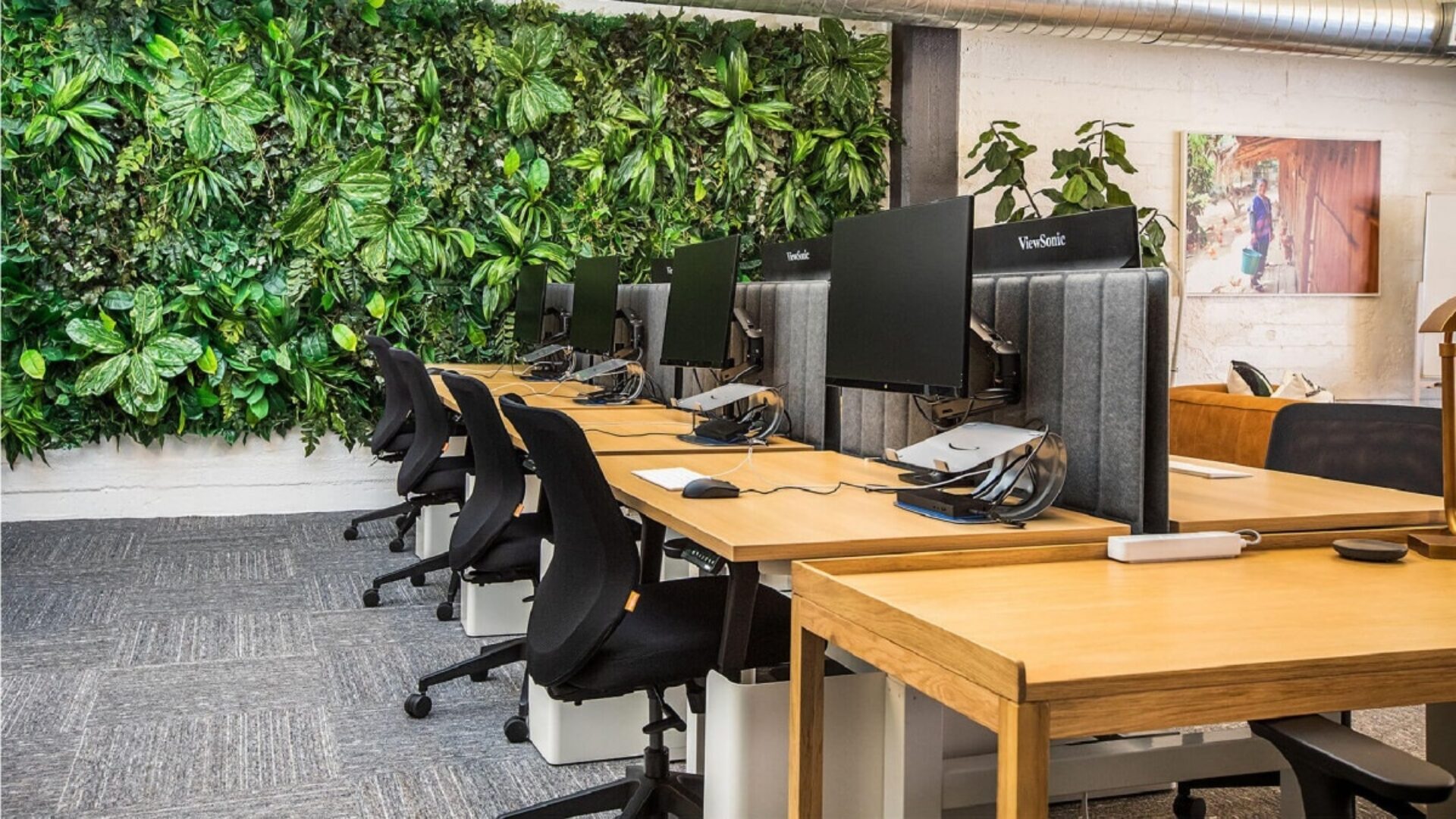Open floorplans, partition-free workspaces, minimal enclosed offices: It was dubbed the “anti-office,” an open-floor workspace designed to foster more collaborative and creative work interactions,and as an answer to traditional, separated workplaces. It was first pioneered by tech giants like Facebook and Google—and like all Silicon Valley exports, the concept soon spread to more traditional quarters, becoming the go-to office design throughout the aughts.
But the appeal of highly social office spaces began to fade at the onset of the COVID-19 pandemic as organizations prioritized team safety leaning into temporary remote work solutions. Now with offices faced with the eventual return to work, designers are faced with solving a dual challenge: creating a workspace design that promotes collaboration and community, while allowing for separation.

(Above: Private spaces within the open office, courtesy of Unebo)
COVID hasn’t killed the anti-office office completely, but it has forced designers to pivot in an effort to uphold wellness standards necessary to keep teams safe and productive.
“In the wake of COVID, we’re adjusting by incorporating the idea of reconfiguring space but also keeping it functional,” says Ashly Cabral, principal of Uneebo in Los Angeles. “We create a sense of comfort by adding privacy panels, dividers, and by adding separate lounge areas throughout.”
In major U.S. cities, office building occupancy rates have plummeted to an average of nearly 25%, according to Kastle Systems, as many workers have adopted a hybrid model of remote work or simply work exclusively from home. To maximize the minimized workforce, one solution is creating touchdown spaces, scaled-back layouts that accommodate teams that come into the office as needed.

(Above: Workspace incorporating collaborative spaces, courtesy of Unebo)
“We make sure to design with distancing but still within the same area to allow for collaboration, so lounge areas and breakout spaces have been priority spaces that companies ask for,” Cabral explains.
To continue to promote worker wellbeing, designers are working to eliminate shared touch points wherever possible—from implementing touchless switches to installing contactless access points that prevent workers from having to press buttons or touch door handles.
“I don't think offices will ever go back. We’ve always moved forward,” Cabral says. “Communication and collaboration is a top priority. We must design areas for functionality and purpose.”

